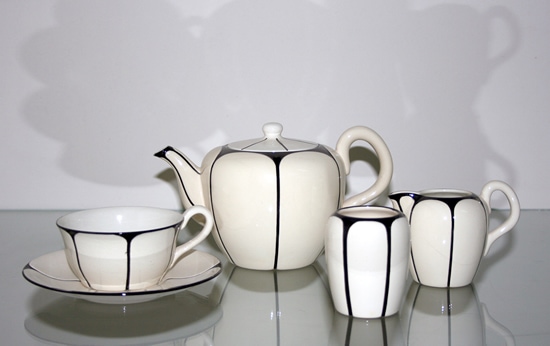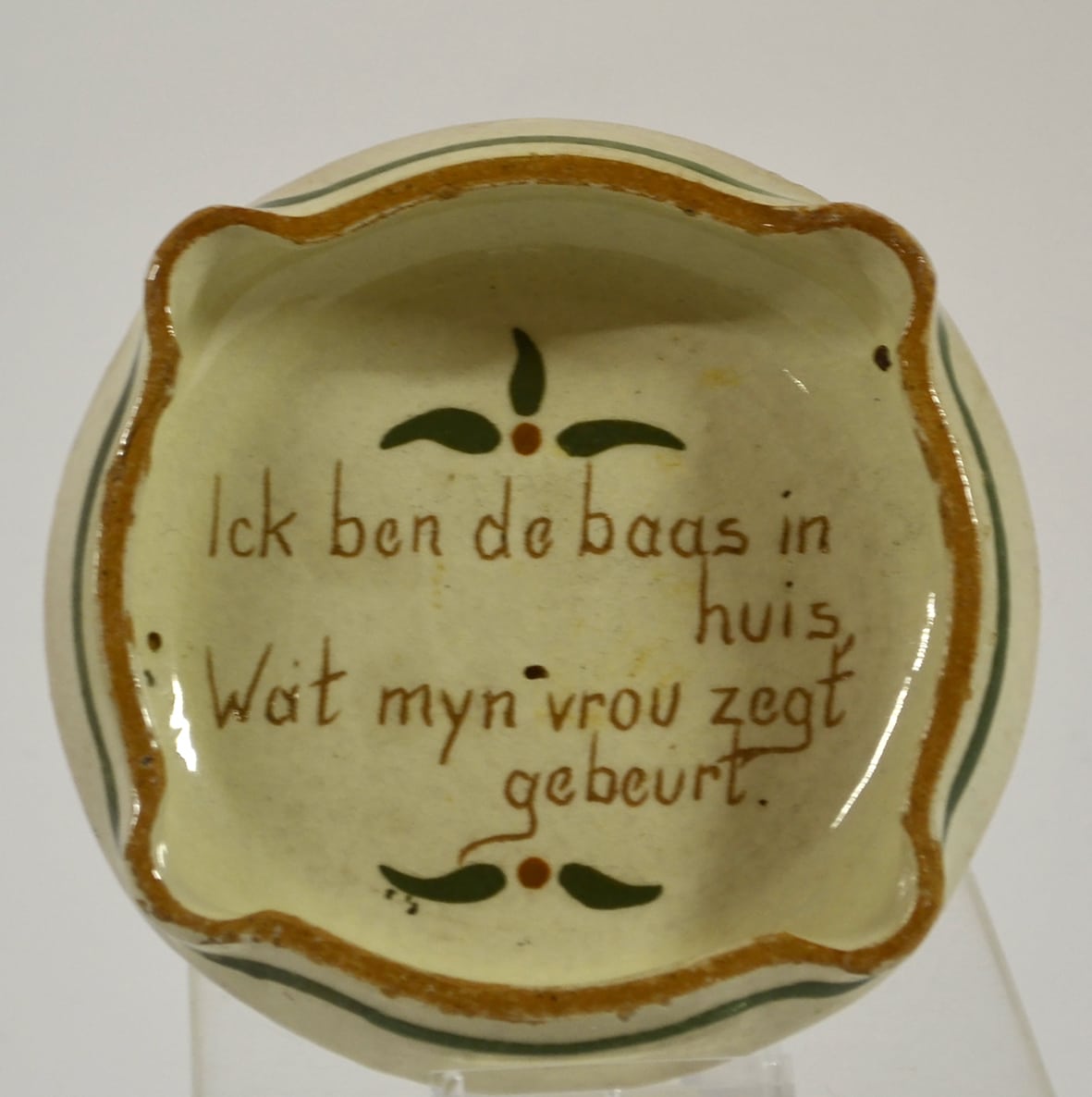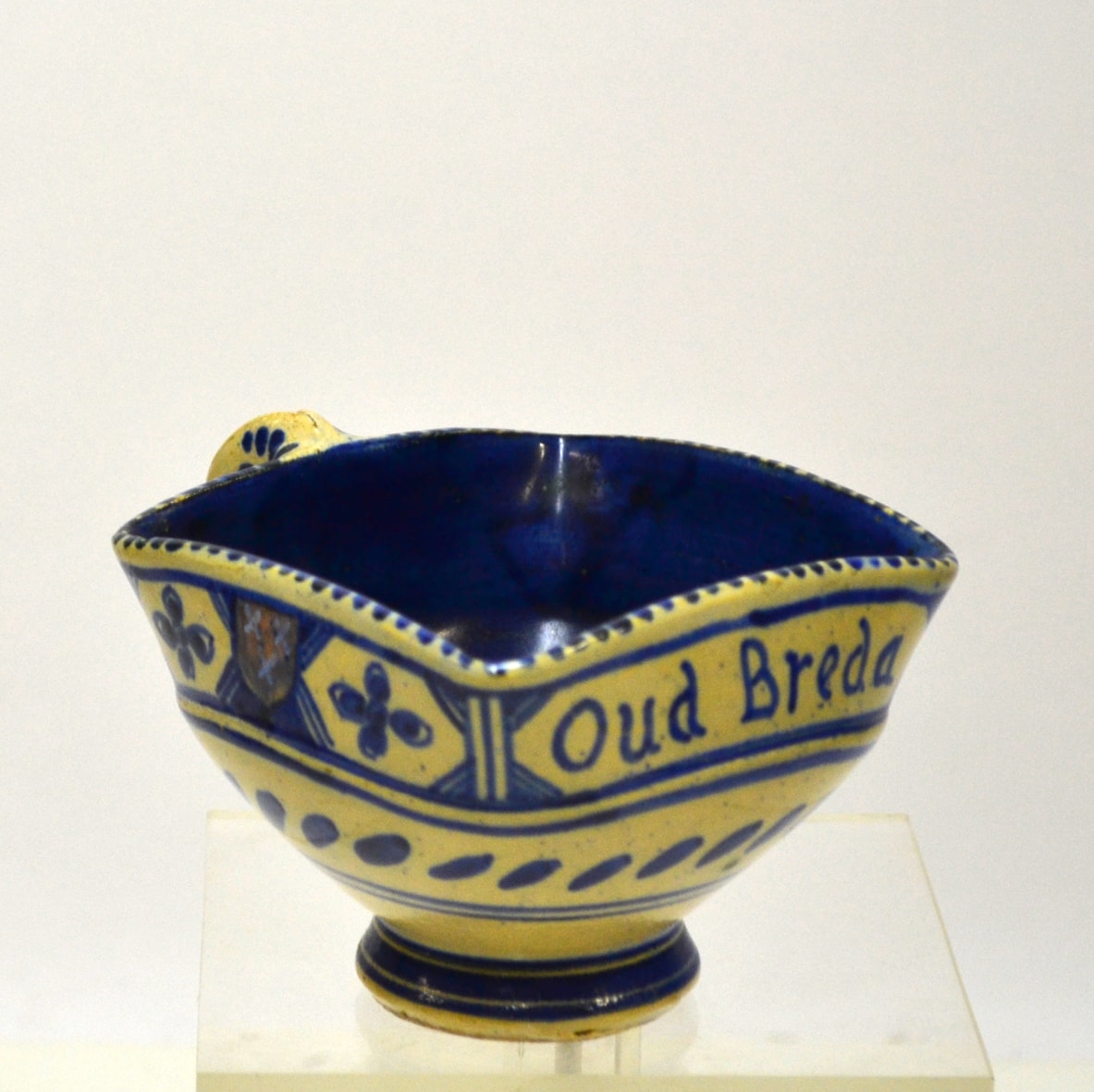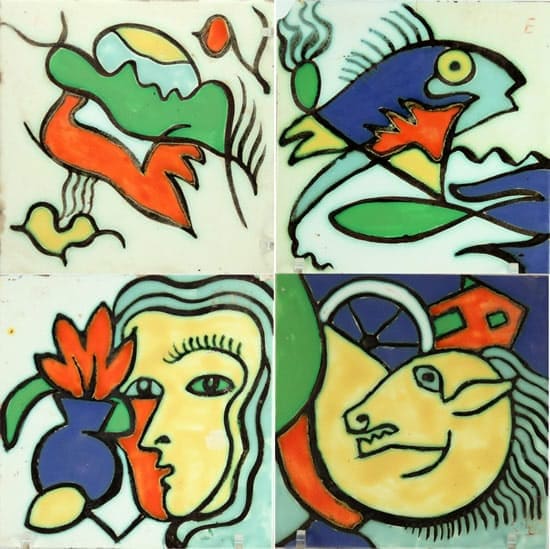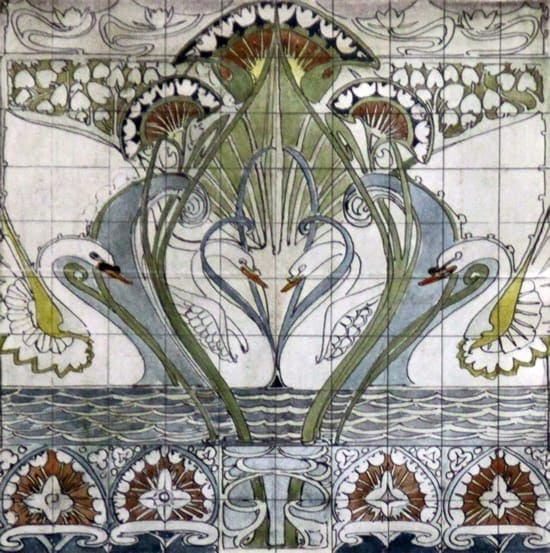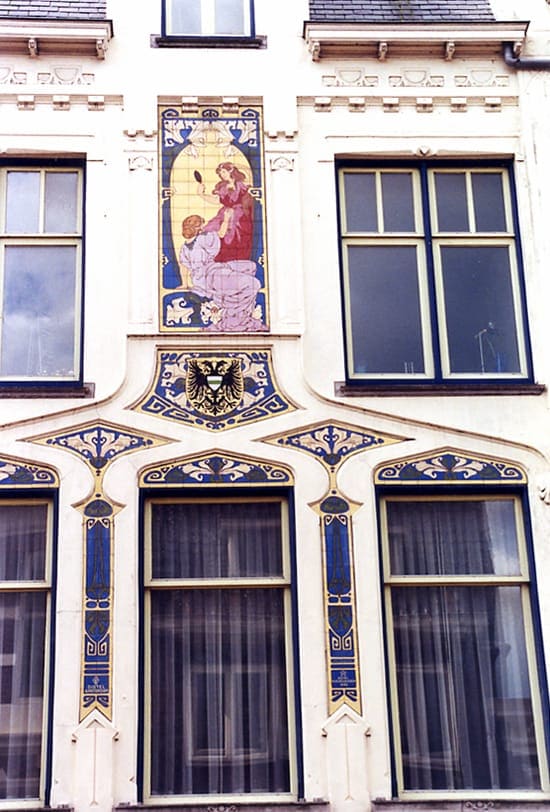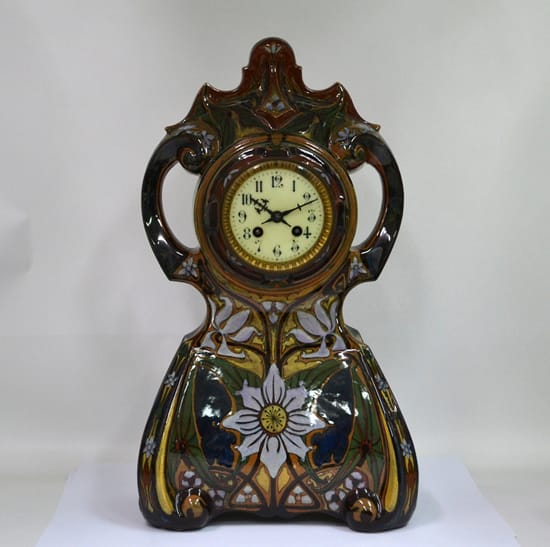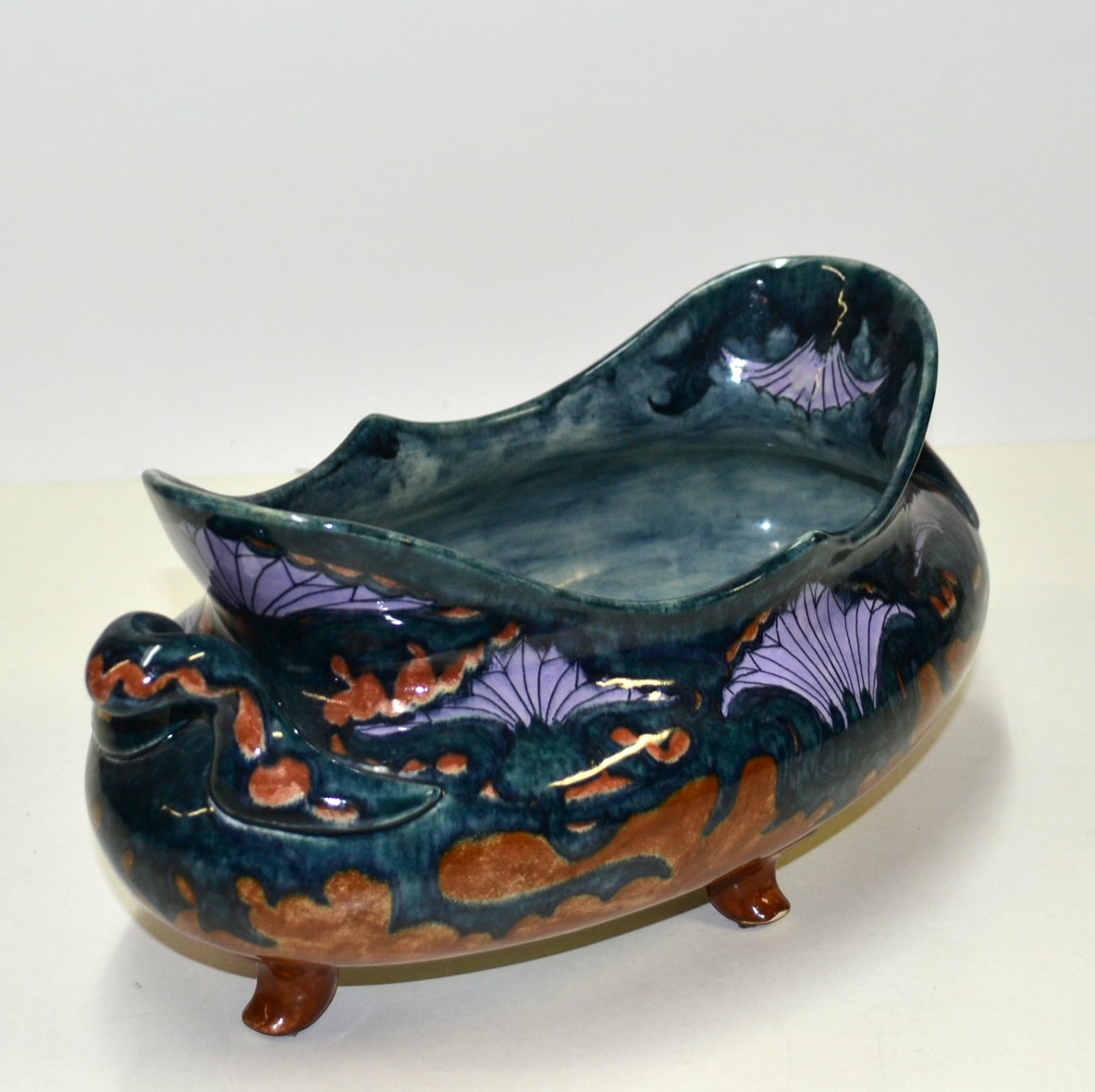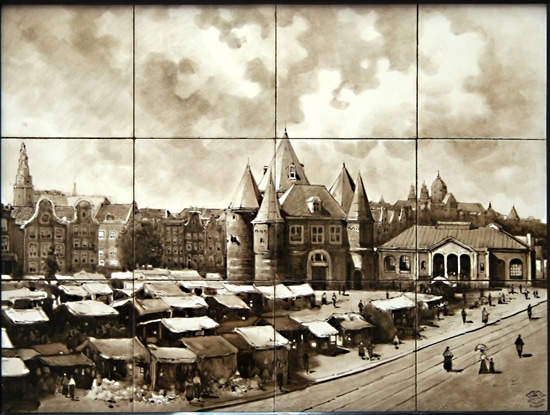Many new ceramic techniques that were first applied at De Distel and later at Goede-waagen for monumental and mural commissions were initiated from 1911 onwards by the 'arts and crafts artist' Carel Adolph Lion Cachet (Amsterdam 1864 - Vreeland 1945). Although not directly supported by written sources, Lion Cachet's admiration for the mosaics executed in the Byzantine style in the San Vitale of Ravenna in the 6th century AD must have been the source of Goedewaagen's ceramic mosaics.
Collection
From 1920 onwards, the pipe and coarse earthenware factory Goedewaagen focused on the production of cast earthenware. Dinnerware for the new middle class was one of the aims from then on. Before 1940, various ceramists-designers started to produce tableware; modeller Jan van Breukelen supplied most of the designs. The museum presents a number of remarkable designs from its own collection.
From 1920 onwards, the pipe and coarse earthenware factory Goedewaagen focused on the production of cast earthenware. Dinnerware for the new middle class was one of the aims from then on. Before 1940, various ceramists-designers started to produce tableware; modeller Jan van Breukelen supplied most of the designs. The museum presents a number of remarkable designs from its own collection.
From 1920 onwards, the pipe and coarse earthenware factory Goedewaagen focused on the production of cast earthenware. Dinnerware for the new middle class was one of the aims from then on. Before 1940, various ceramists-designers started to produce tableware; modeller Jan van Breukelen supplied most of the designs. The museum presents a number of remarkable designs from its own collection.
According to art-historical literature, it was Plateelbakkerij Flora that carried the torch of innovation in the ceramics city of Gouda, and with it its connection to modern art. Nothing could be further from the truth. Already during the war years, Willem Hendrik van Norden joined Goedewaagen in its experiments before 1940. Chris de Moor, a painter from The Hague, who worked in the Goedewaagen-Distel studio from 1949 onwards, also propagated the spirit of the New Look in his paintings on earthenware. Read more about Goedewaagen's Retro pottery.
In 1902, Distel director Jac. M. Lob bought the Amsterdam tile factory Lotus from the Groningen artist-designer Bert Nienhuis (1873-1960). It was an extremely important year for Nienhuis. Based on his designs, urban villas on Van Eeghenstraat were decorated with monumental facade tableaux in the spirit of German Jugendstil. For the Reading Library on the Rokin - later the building of Sotheby's Amsterdam - he designed the florally abstracted tiles for mantelpieces in almost pure watercolours, which can now be seen in the Dutch Tile Museum. In 1992, Royal Goedewaagen commissioned a tile tableau after a symmetrical watercolour design by Nienhuis from before the summer of 1902, which was kept at De Distel and later at Royal Goedewaagen. The fine linear stylisation is still in the vein of Nienhuis' earlier crane tableaux for the Lotus.
In 1903, architect A. Th. Van Elmpt commissioned seven tableaux on the façade of the shop he was renovating at 101 Herestraat in Groningen, embedded in his Nieuwe Kunst (New Art) design. For the Distel oeuvre, the design which, in all probability, came from Bert Nienhuis, was by far the most in keeping with the atmosphere of the Czech Art Nouveau artist Alfons Mucha.
Thanks to a capital gift from M. Schoonbroodt in 2015 of 21 objects from the Faïencefabriek 'Holland' in Utrecht, the Goedewaagen Ceramic Museum can offer a very special glimpse of the decorative earthenware production of Willem Mijnlieff's factory between 1893 and 1905. The faience decors are similar to those used at Rozenburg, but were generally lighter in colour. The neo-baroque models are particularly unique.
Thanks to a capital gift from M. Schoonbroodt in 2015 of 21 objects from the Faïencefabriek 'Holland' in Utrecht, the Goedewaagen Ceramic Museum can offer a very special glimpse of the decorative earthenware production of Willem Mijnlieff's factory between 1893 and 1905. The faience decors are similar to those used at Rozenburg, but were generally lighter in colour. The neo-baroque models are particularly unique.
By taking over Schillemans' tile factory, director Jan Willem Mijnlieff successfully set up a very ambitious programme of faience ornamental earthenware, which he used to compete with the Haagsche Plateelfabriek Rozenburg. A second pillar of Mijnlieff's production was the manufacture of tiles and tile pictures. For the tableaux in particular he managed to secure two painters from Rozenburg, namely Johannes Karel van Leurs and Jan Carel Heytze. With these painters the Holland-Utrecht supplied high-quality tableaux for interiors and facades.


